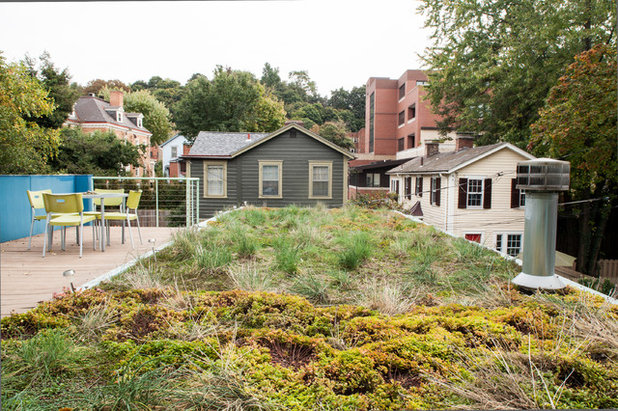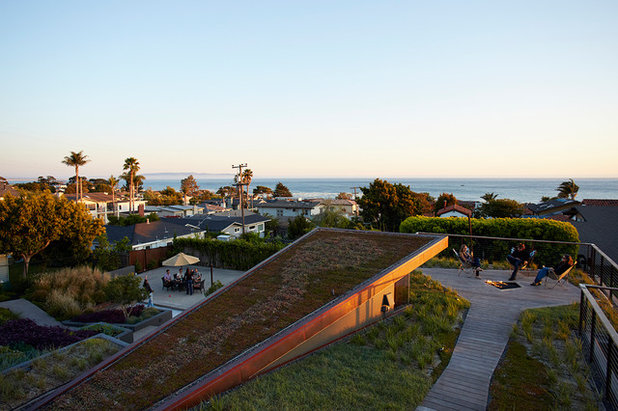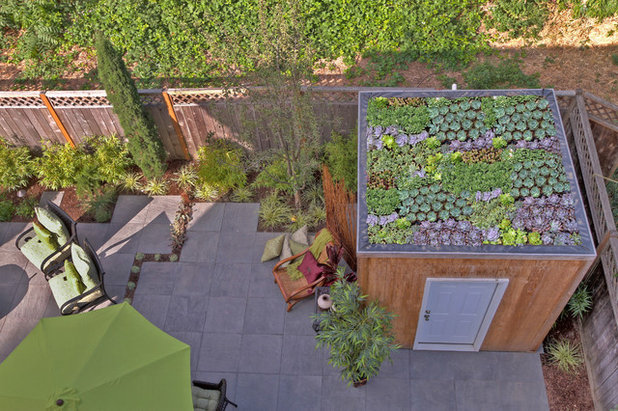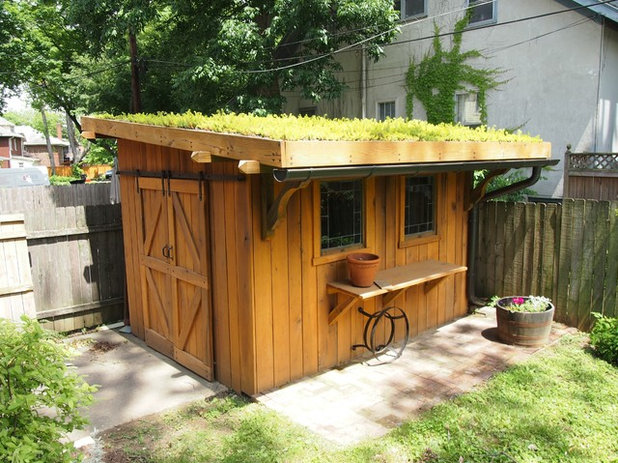Green roofs have a number of environmental benefits. In addition to improving air quality, conserving energy and reducing the urban heat island effect, green roofs benefit water quality by absorbing water during small storms and slowing stormwater runoff from large storms. A green roof of any size can be implemented in the home landscape as part of a sustainable stormwater landscape design.

Jason Snyder
1. Green roofs intercept water. Planted roofs intercept rainwater from small storms and, depending on the amount of rainfall, absorb water and then release it as transpiration. Intercepting rainwater this way mimics the natural condition of plants absorbing and releasing water, which helps prevent flooding downstream. Shallow green roofs are able to fully intercept stormwater when rainfall is less than an inch at a time. This lessens the stormwater runoff load on the water bodies downstream from our homes.
This green roof in Pittsburgh includes six varieties of sedum (succulents), alium (chives) and talinum.

Jeffrey Gordon Smith Landscape Architecture
2. Green roofs slow down runoff. In addition to intercepting the small storms, green roofs filter and buffer water during long, intense rainfall periods. Water takes longer to travel through the plant and other media layers on a green roof compared with a traditional roof, where water runs right off and is whisked into the roof gutters and down the spouts. Slowing down runoff returns water to the aquifer at a slower rate and reduces flooding downstream.

Paradise Restored Landscaping & Exterior Design
3. Green roofs lessen the stormwater runoff load on other systems. In home landscapes, rooftops can account for 40 percent or more of the property footprint. Implementing a green roof on your property means that you can potentially intercept a major portion of the stormwater runoff before it gets to the impervious areas on your site. It also lessens the load on other sustainable systems you may be using, like rain gardens and permeable paving.

Graham Design and Construction
4. Green roofs stop dirty runoff at the source. When you compare a nonplanted roof with a green roof, the effects on stormwater are clear: The nonplanted roof is a large surface area that water falls onto and then rolls off of quickly.
There are two issues with a nonplanted roof. Water falls on the roof and drains away very quickly. Think of how quickly the water comes off your roof to the downspout during a heavy rain. That fast runoff is a big problem in urban environments, where there are more impervious surfaces, because it increases flooding downstream. For small storms, the plants on living roofs intercept the stormwater and release it back into the atmosphere through transpiration and evaporation. The root zone and growing media also absorb some of the water. And for heavy storms, the green roof slows down the water that it cannot directly absorb.
The second issue is that the surface of a nonplanted roof is dirty, because pollutants from the atmosphere regularly settle on our rooftops. When the dirty rooftop is rained on, all of the pollutants are washed away quickly and end up downstream. Green roofs stop these issues at the source by storing carbon dioxide and intercepting airborne particles.





